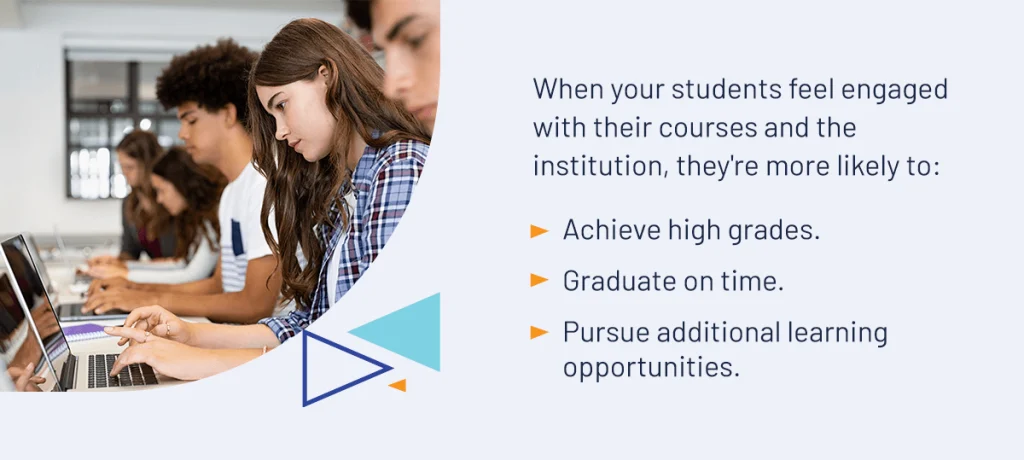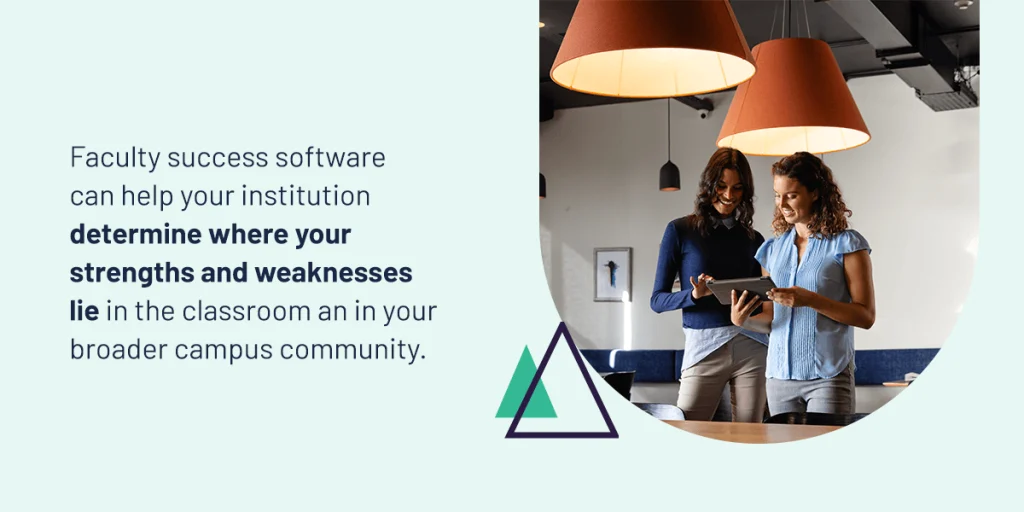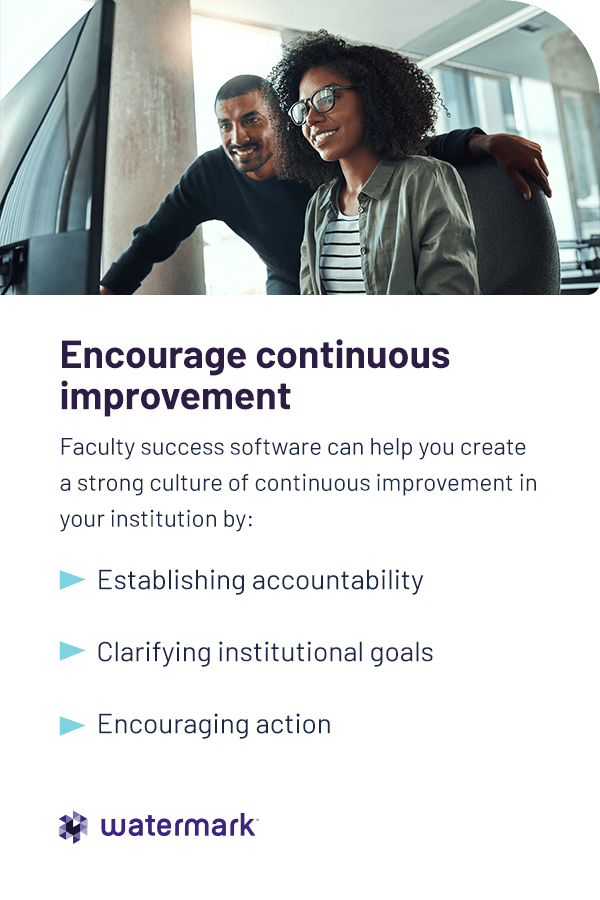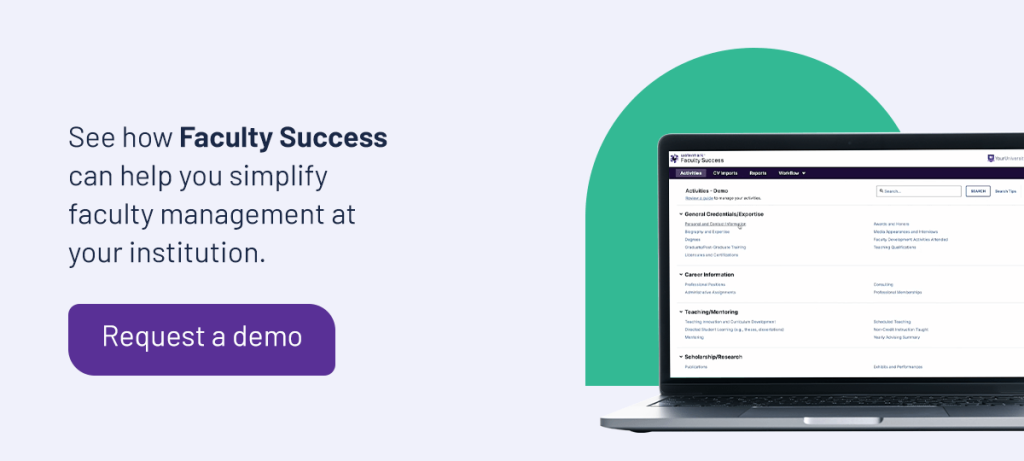




Your faculty and staff are critical components of your institution’s educational mission, but managing the human element of higher education is often complicated when you lack access to the proper insights.
The best way to facilitate consistent progress in your institution is to implement a robust digital faculty management solution. This article will explain how technology can improve resource management in education and ways to implement it to improve your decision-making processes.
A faculty management system (FMS) is a centralized administrative software solution that houses all your faculty information.
By creating a single source of truth for all faculty activity and performance data, you can consolidate your institution’s tech stack, save on technology costs, and streamline tedious administrative tasks.

Some excellent FMS features and functionalities to look out for include:
Of course, proper implementation is also essential for getting the maximum return on your investment. A dedicated support system and a software vendor that prioritizes your institution’s unique needs are essential for getting the most possible value out of your new technology.
Digitization is one of the biggest priorities of institutions nationwide. Cloud transformation has not only made remote learning possible, but it has also enabled all areas of your institution to establish stronger connections and become more resilient as a whole.
Today’s institutions are more agile and forward-thinking than ever, and ensuring your faculty are at the top of their game is a key part of that progress.
An advanced FMS can benefit stakeholders at every level of your institution, from faculty to students and administrators. Here’s how:
Engagement is one of the biggest contributors to student retention and success. When your students feel engaged with their courses and the institution, they’re more likely to:
End-of-course surveys empower students to contribute to their education by providing feedback on their professors and courses. This feedback is incredibly helpful for creating more engaging course materials and improving faculty teaching methods.
Additionally, integrations between your FMS and course evaluation solutions enable seamless transfers of data between applications, so faculty can easily access and gain actionable insights from the collected data.
While student engagement tends to get the spotlight as the biggest contributing factor to student success, high faculty engagement is also critical for positive student outcomes.
After all, active involvement with course material and the campus community significantly improves the chances that a faculty member will put effort into their teaching.
An intelligent FMS with powerful analytics capabilities can provide valuable insights into the contributions your faculty has already made, revealing opportunities to better support them moving forward.
It can also save time ordinarily spent managing minor administrative tasks, which opens your faculty up to:
A solution with workflow automation helps your academic affairs department become more efficient by eliminating some of the repetitive tasks that eat up so much of their time.
Accreditation preparation season is one of the most stressful times of the year for faculty, staff, and administrators alike. And relying on paper assessments or outdated digital tools can make it even more hectic by:
A solution that includes custom, on-demand reporting capabilities automatically pulls faculty data from the various applications in your system, enabling you to generate compliant documentation in just a few minutes.
Pre-built templates for specific accreditation bodies further streamline the process by pulling the specific data you need, when you need it.
Higher education institutions are communities in themselves, and engaged faculty members are actively involved in their campus community.
In building rapport with their students, your faculty encourages the next generation to follow their passions in education and guides them toward their next career steps — invaluable help in a world that changes so rapidly. Mentoring relationships between faculty and students can help students gain a sense of belonging at your institution, which can improve student retention and graduation rates.

Faculty success software that integrates with a student survey solution can help your institution determine where your strengths and weaknesses lie in the classroom and in your broader campus community. For example, if there is frequent collaboration between faculty members, and between faculty and students, your institution is more likely to have a strong community united by the desire for knowledge and learning.
Faculty want to teach at institutions that are worth their time. Like students, prospective faculty will often browse your site to see what kinds of thought leadership exist at your institution or to find potential collaborators.
Having the most up-to-date faculty information available on your website could help your institution establish itself as a leader in prominent fields like STEM and medicine, which can draw new talent to your teaching staff. When your institution has a prestigious reputation, you’re also more likely to see your new hires stay on for many years.
Automated website updates using data from your faculty success system means your faculty and IT department can sit back and relax while your faculty profiles essentially maintain themselves. All anyone has to do is input the new information into the system and watch it automatically transfer over.
Although remote work opportunities are still limited in higher education, they’re incredibly popular. For many institutions, a lack of hybrid and flexible teaching arrangements is one of the driving factors behind high faculty turnover.
And it’s not hard to see why — both tenure track and adjunct faculty members balance classes, research, office hours, extracurricular activities, and a busy home life. Allowing more flexibility in working from home at least part of the week can help your faculty feel more in control of their schedules, which could boost engagement and job satisfaction.
Bottom line, if you want to retain more of your faculty, you’ve got to invest in more flexible working arrangements.
Choosing the right FMS can help your institution open opportunities for remote and hybrid work. By harnessing the power of data and providing faculty with the ability to remotely view and edit their data as well as student information, they can produce the same results you expect without having to be on campus.
Plus, an integrated FMS can pull student data from your learning management system (LMS) so professors can keep track of student progress from anywhere with an internet connection.

Building a culture of continuous improvement at your institution is essential for remaining competitive in an industry where standards and expectations are constantly evolving.
Faculty success software can help you create a strong culture of continuous improvement in your institution by:
Integrations with other software in your institution’s tech stack, such as your LMS and student information system (SIS), supplement these benefits by providing more concrete evidence of how faculty actions impact the higher education institution as a whole.
From groundbreaking publications to innovative research, higher education faculty are incredibly high-achieving people. With these leaders at the forefront of your institution, you can benefit everyone at every level from staff to administration.
Administrators can use your faculty success solution to quickly create detailed reports that put faculty achievement front and center, which can help generate positive press for your institution. Showcasing your faculty’s strengths and accomplishments can also help you boost your institution’s reputation as a hub of innovation and learning — potentially increasing your chances of securing funding from private or public sources.
Creating more complete databases of faculty work can help you monitor their progress over time. Are they continuously striving to learn and produce research about the newest discoveries in their fields? How often do they publish their work, and do they look for opportunities to collaborate with their colleagues? An FMS lets you track all this information and more.
Faculty reviews, promotions, and tenure are complex processes that require your administrators to review massive quantities of data.
Who should get tenure? Which of your faculty are doing the most meaningful work? What should your faculty aim to achieve before the next review year? When data is missing or inaccurate, answering these questions becomes even more complicated.
You need your faculty data to be complete and easily accessible to facilitate informed decision-making. An FMS helps you achieve this goal by creating a single, unified source of truth for all faculty activity and performance data.
Further, a solution with a user-friendly interface makes it easy for faculty to enter or edit their own information. As long as they keep up with their records, your academic affairs department will have access to the most current version of faculty data at all times.
Improving diversity, equity, and inclusion (DEI) is vital for higher education institutions because it:
Your faculty data can help contribute to a more diverse, equitable institution by collecting and analyzing your DEI progress.
Pull faculty data from anywhere in your system and run analytics on the spot for rapid insights. Rich visualizations and narratives help put your data in its proper context so all your stakeholders understand its significance.
From helping their students grasp challenging course concepts to helping them feel a stronger sense of community, your faculty members do a lot to drive student success.
Students often view faculty profiles on an institution’s website for assistance in choosing which institutions to attend or which programs and classes to enroll in — but all too often, these profiles are inaccurate and out of date. And updating these pages is a more time-consuming task than many institutions anticipate.
An automated FMS that integrates with your website can take this task off your hands so you can keep your institution’s website current without spending extra time or energy on tracking down information and links. When prospective students see that your faculty is active in their research, they’ll be more likely to apply to your institution.
At Watermark, we’re committed to helping higher education institutions get the most value out of their data — including their faculty data.
Watermark Faculty Success is our centralized faculty activity management solution. Easily track faculty activity and automatically update their accomplishments on live CVs and public web profiles.
As part of the Watermark Educational Impact Suite (EIS), Faculty Success offers deep integrations with all other Watermark solutions. Seamless data transfer across your tech stack unlocks powerful insights through detailed custom reporting features for hassle-free review and accreditation preparations.
See how Faculty Success can help you simplify faculty management at your institution. Get started today with a personalized demo.






























































































































































































































































































































































































